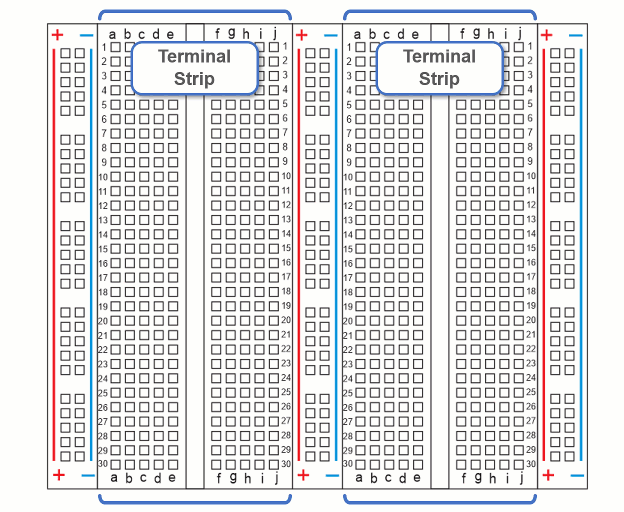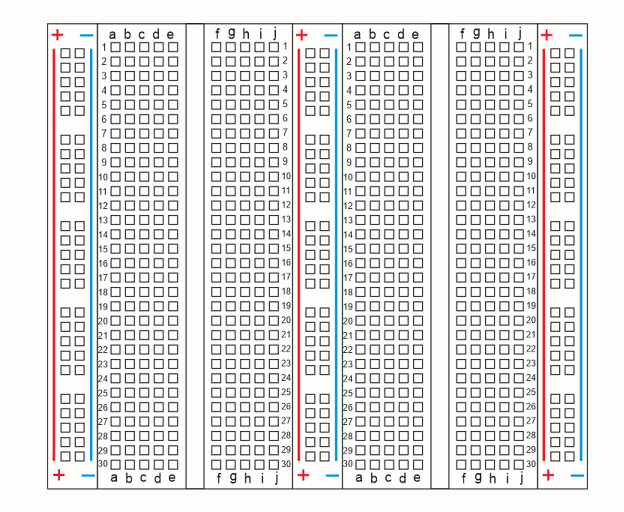Terminal Strips
Here are two simple rules of terminal strips, for the breadboard in your kit:
- Each row of 5 sockets is electrically connected
- Each row of 5 sockets is insulated from all other sockets
So, to electrically connect a pair of wires or leads—or up to five at a time— just pick one of the rows of 5 sockets and plug them in.
What if you want to connect a different pair of wires or leads? For those two leads to be electrically connected to each other, but not to the first group, just pick a different row of 5 sockets. Keep in mind that these are rows of 5 sockets, not 10. So, if you plug a wire into (a, 16) and another into (j, 16), they will not be connected. That’s because even though they would be on the same row, they are not on the same row of 5 sockets. Want them connected? Add a wire that connects the two rows.
(View full-size: terminal-strips-for-electrical-connections.mp4)

The row of sockets on the left side of the slot in the center of the terminal strip are electrically insulated from the row of sockets on the right.
So, if your terminal strip has some other number of sockets per row, you can use the slot in the center as your guide for which sockets are connected. Let’s say a terminal strip has 12 sockets per row with 6 sockets to the left of the slot in its center, and 6 more sockets to the right. In that case, for a given row, sockets in columns a through f would be electrically connected. Sockets in columns g through l would also be electrically connected, but they would be insulated from the sockets in columns a through f.
Bus Strips
The breadboard in this kit also has three bus strips. Instead of rows of 5, each bus strip has two columns of 25 sockets. All 25 sockets in the column by the blue line are electrically connected, but insulated from all other sockets. The same rule applies for a column of 25 sockets by a red line.
Bus strip columns can also be connected with wires. For example, a jumper wire that is plugged into the (-) column of the center and right bus strips will make it so that a lead plugged into the (-) column of the center bus can be connected to a lead in the (-) column of the right bus.
(View full-size: bus-strips-for-electrical-connections.mp4)

